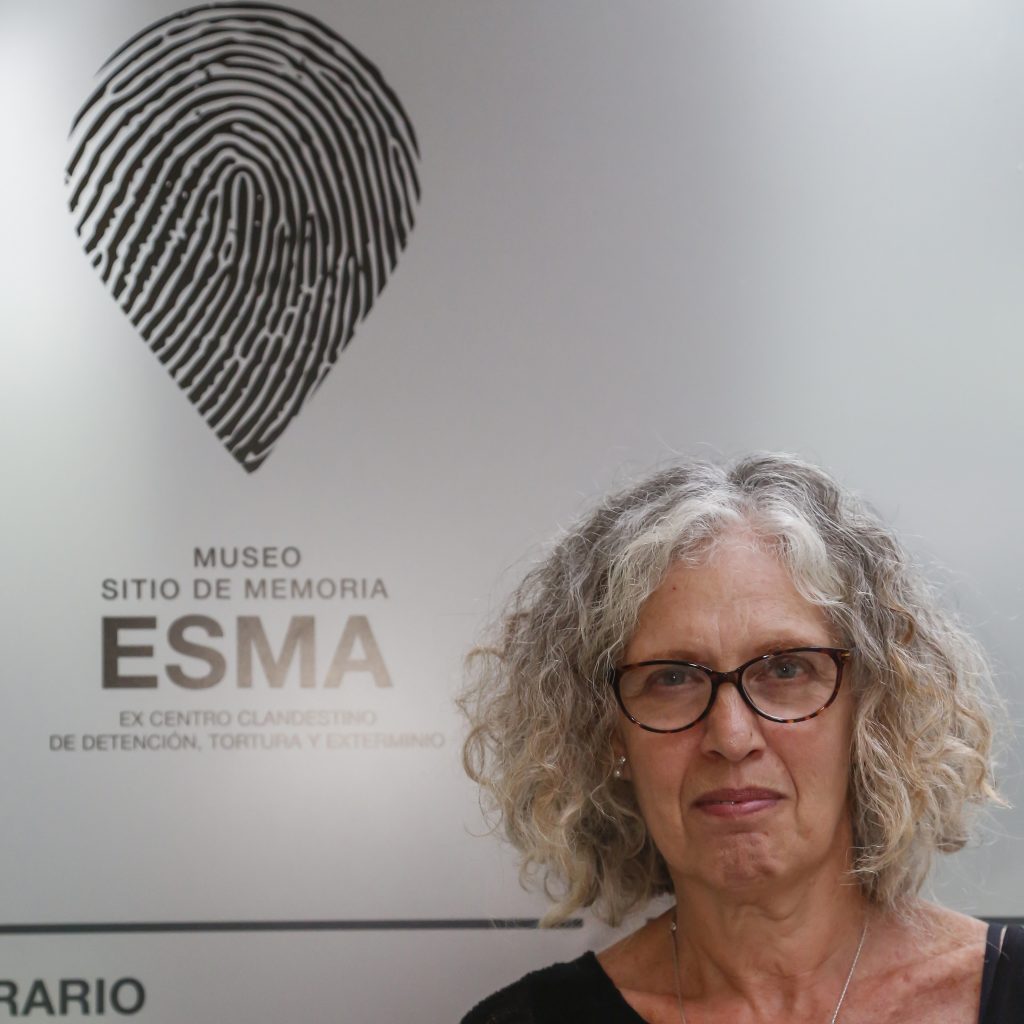Alejandra Naftal
Executive Director of the ESMA Museum and Site of Memory
Since 2015, the process of Memory, Truth and Justice is writing a new and auspicious chapter of its own history. At the request of human rights organizations, the ESMA Museum and Site of Memory, operating under the scope of the country’s Secretary of Human Rights, is carrying on its nomination process for the UNESCO World Heritage List, which identifies and preserves heritage properties which carry an outstanding universal value. The goal? To propose a new interpretation of the property, not in the context of its unquestionable relevance within the history of the country and the region, but as a contribution to the world’s Cultural Heritage. A Heritage of ‘Never Again’
Inaugurated in May 19th, 2015, the ESMA Museum and Site of Memory is now a thorough expression of this social contract that unites Argentines and expresses itself through a State policy that is the result of a constant demand. It is so because its creation was the byproduct of many years of debate and quest for multisectorial consensus, and because its permanent exhibition and the building where it stands bear witness to the crime that characterized our country’s darkest hours and made us infamous around the world.
The challenge is big. Unesco asks those who submit these kinds of candidacies to offer a balanced and truthful version of historic facts, and the proof that the submitted property is not only a relevant testimony for the country but also carries an outstanding universal value. This is what we have been working on almost since the opening of the Museum in 2015, when we conducted a critical analysis of the guidelines provided by the organization regarding the nomination of properties. From then on, the outstanding universal values we are proposing to the institution are State terrorism based on the forced disappearance of people and social consensus as a means to obtain justice, achieved thanks to the struggle and persistence of human rights organizations and survivors.
There are precedents of other sites of memory UNESCO has declared as part of that program. They are Gorée Island in Senegal, the Valongo Wharf in Brazil, the Nazi concentration and extermination camp in Auschwitz-Birkenau in Poland, the Old Mostar Bridge in Bosnia-Herzegovina and the South African prison of Robben Island, which represents the fight against apartheid. As in these cases, our candidacy aims to reconstruct the wounds from our recent history’s traumatic events. This way, we hope to contribute to the process of Memory, Truth and Justice ushered by the return of democracy after the last military dictatorship of 1976-1983.
We are aware that in order to achieve this we need a true commitment by the Argentine State in all of its dimensions: political, diplomatic, economic and social. That is why ahead of us lies the great work of securing the support of different sectors that create dialogues and reflections about the candidacy. We will do so with the belief that the process itself is an achievement, and always with the aim of continuing to build more Memory, more Truth and more Justice, the fundamental pillars of our Democracy. Argentine Memory for the World.

